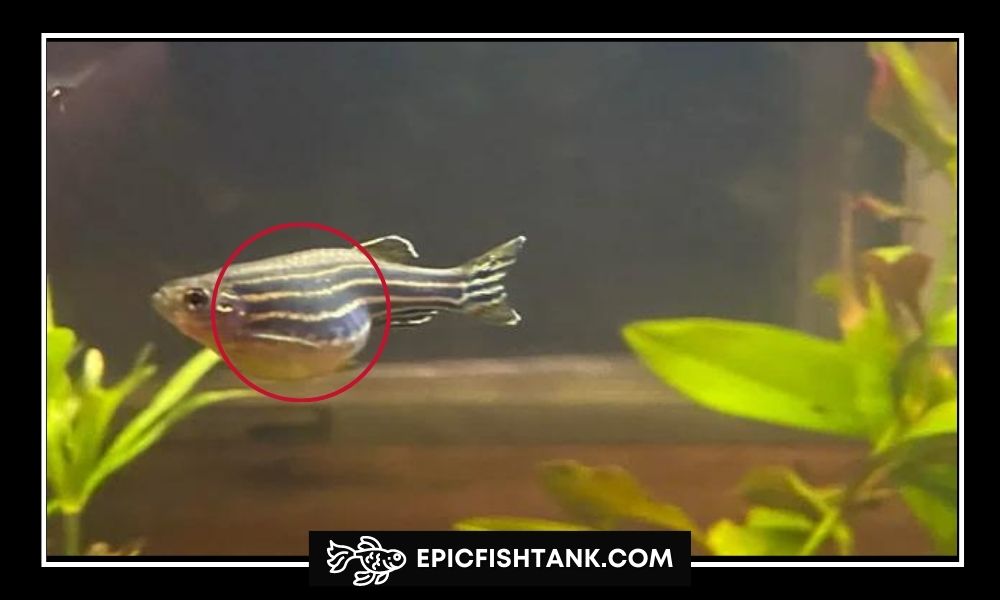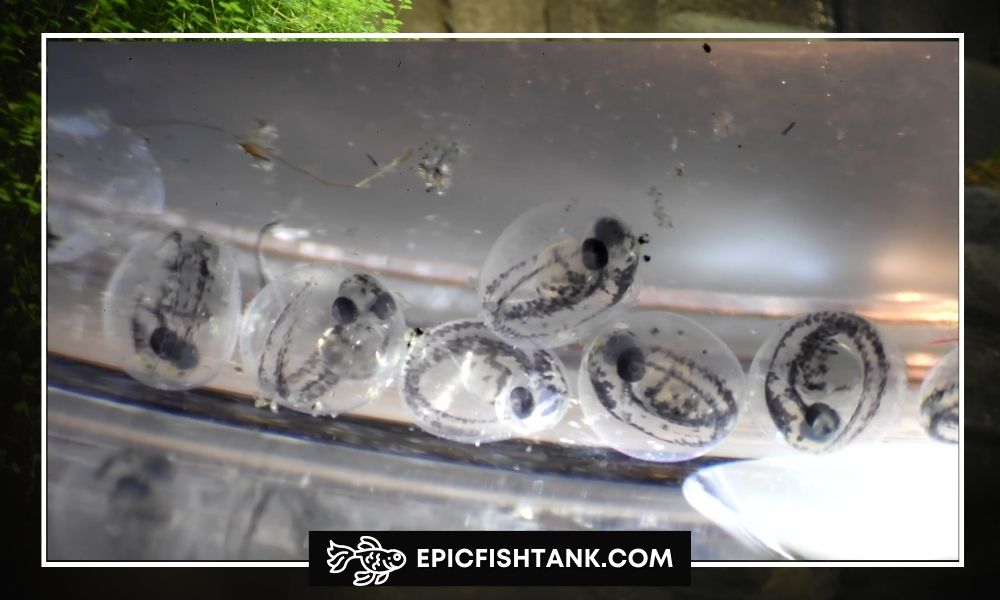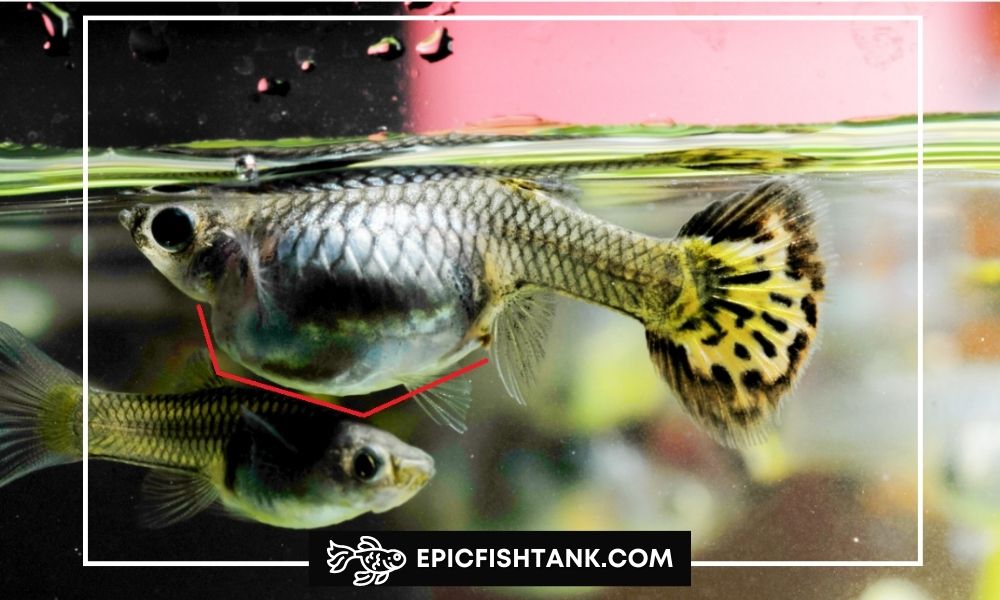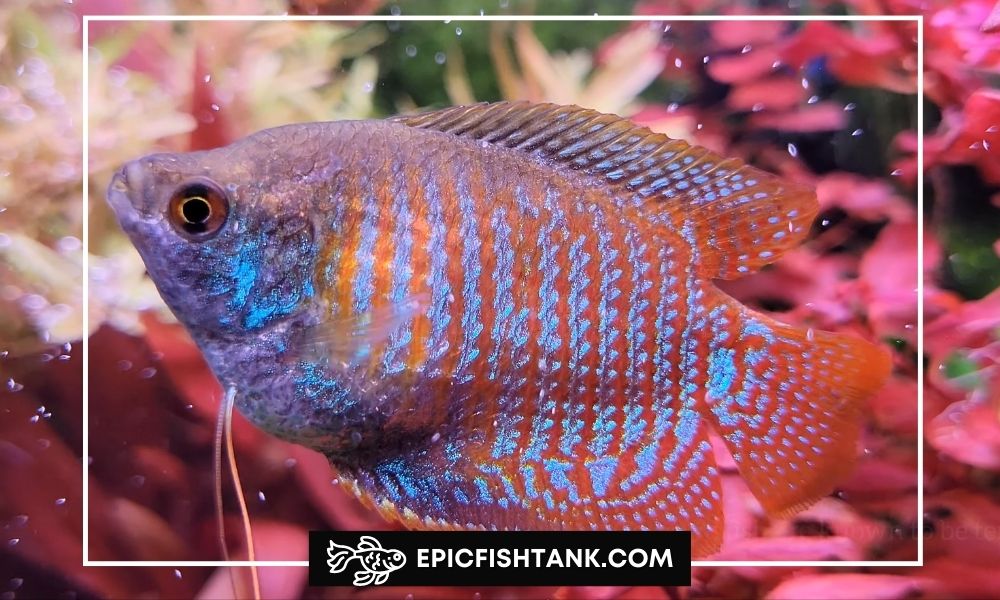Sign of Pregnant Zebra Danio: Key Points Explained

Zebra danios are a popular species of fish, and they can be found in many home aquariums. But what happens when your zebra danio is pregnant? It’s important to know the signs of pregnancy so you can provide the best care for your fish.
Signs of Pregnant Zebra Danio
Zebra Danios (Danio rerio) are popular freshwater aquarium fish. While they don’t technically get pregnant, they do carry eggs. Here are the signs indicating your female Zebra Danio is carrying eggs:
- Swollen belly: Female Zebra Danios carrying eggs will develop a noticeably rounder and larger belly.
- Increased appetite: These fish may eat more than usual in preparation for laying eggs.
- Male following female: Males may start following the female around the tank, indicating mating behavior.
💡Zebra Danio Pregnancy Facts
Zebra Danio Pregnancy Facts:
How Long Are Zebra Danios Pregnant For?
Zebra Danios are not pregnant in the traditional sense. They carry eggs, which are then fertilized externally. A female Zebra Danio can carry eggs for 1-2 weeks before laying them.
Are Danios Livebearers or Lay Eggs?
Zebra Danios are egg-layers, not livebearers. They lay eggs, which are then fertilized externally by the male. This process is known as oviparity.
Witness the Fascinating Video of a Pregnant Zebra Danio below. You’ll witness the unmistakable signs of a Zebra Danio carrying eggs, such as a swollen belly.
How to take care Pregnant Zebra Danio
Congratulations on your pregnant zebra danio! Here are some tips to help you take good care of her:
Step 1: Provide a separate breeding tank:
Zebra danios are egg scatterers, so it’s best to have a separate breeding tank for the pregnant female to prevent other fish from eating the eggs or fry. The tank should be well-filtered, well-aerated and have plenty of hiding places such as plants or decorations.
Step 2: Keep the water clean and stable
Pregnant zebra danios need clean, stable water conditions. Make sure to perform regular water changes to keep the water clean and maintain stable water parameters.
Step 3: Feed a varied diet
A varied diet of high-quality foods will help keep the pregnant zebra danio healthy and provide the necessary nutrients for the developing eggs. You can feed a mixture of live food, frozen, and dry foods such as brine shrimp, bloodworms, and high-quality flake or pellet foods.
Step 4: Observe her behavior
Pregnant zebra danios may exhibit different behaviors such as becoming more aggressive or territorial. Keep an eye on her behavior and remove her from the breeding tank if she shows signs of stress or if the eggs have been laid.
Step 5: Provide a suitable place for laying eggs
Zebra danios like to lay their eggs on plants or decorations in the tank. Provide some suitable surfaces for the eggs to stick to and check regularly for the presence of eggs.
By following these tips, you can help ensure a healthy pregnancy and successful breeding for your zebra danio. Good luck!
What Do Zebra Danios Eggs Look Like?

Zebra danio eggs are tiny, round, and transparent, making them somewhat difficult to spot. They measure around 0.5 to 1 millimeter in diameter, and when first laid, they appear as small, clear spheres.
As the embryos develop, you may notice a tiny, dark dot in the center of the egg, which is the developing fish. Over time, the embryos become more visible and take on a more elongated shape, eventually hatching into tiny, transparent zebra danio fry.
If the eggs are fertilized and healthy, they’ll have a slightly amber or yellowish hue, while unfertilized or unhealthy eggs may turn white and become opaque or moldy.
Zebra Danio Fish Eggs Hatching under a Microscope Video
Check out this cool video of zebra danio eggs growing and hatching under a microscope! You’ll also see helpful bacteria in the water that break down fish waste. And you can observe the eggs at different stages, from just hatching to newly hatched.
FAQs
Male Zebra Denio VS Female Zebra Denio
This section will outline the detailed differences between male and female Zebra Denio.

💡Physical Differences:
- Body Shape:
- Male Zebra Denio: Generally have a more streamlined, slender body.
- Female Zebra Denio: Tend to have a fuller, rounder body, especially when carrying eggs.
- Coloration and Patterns:
- Male Zebra Denio: Often exhibit brighter coloration and more distinct patterns.
- Female Zebra Denio: Typically have a slightly duller coloration and less defined patterns.
- Size:
- Male Zebra Denio: Generally smaller, reaching an average length of 1.5 to 1.8 inches (3.8 to 4.6 cm).
- Female Zebra Denio: Tend to be larger, reaching an average length of 1.8 to 2.0 inches (4.6 to 5.1 cm).
Summary of Physical Differences:
| Attribute | Male | Female Zebra Denio |
|---|---|---|
| Body Shape | Streamlined, slender body | Fuller, rounder body |
| Coloration | Brighter, distinct patterns | Duller, less defined patterns |
| Size | 1.5-1.8 inches (3.8-4.6 cm) | 1.8-2.0 inches (4.6-5.1 cm) |
💡Behavioral Differences:
- Aggression:
- Male Zebra Denio: Can be slightly more territorial and aggressive, especially during breeding times.
- Female Zebra Denio: Generally less aggressive and more peaceful in nature.
- Swimming Patterns:
- Male Zebra Denio: Often found swimming actively in the middle or upper levels of the aquarium.
- Female Zebra Denio: May swim more slowly and in the middle or lower levels of the aquarium, especially when gravid.
- Mating Behavior:
- Male Zebra Denio: Actively pursue females, display courtship behaviors, and may establish a small territory.
- Female Zebra Denio: Release eggs in response to the male’s courtship, often in areas with dense vegetation.
Summary of Behavioral Differences:
| Attribute | Male | Female |
|---|---|---|
| Aggression | More territorial, aggressive | Less aggressive, peaceful |
| Swimming Pattern | Middle/upper aquarium levels | Middle/lower aquarium levels |
| Mating Behavior | Pursue females, courtship | Release eggs, respond to courtship |
💡Breeding Differences:
- Fertility:
- Male Zebra Denio: Produce sperm for fertilization.
- Female Zebra Denio: Produce eggs, which can be fertilized by the male’s sperm.
- Parental Care:
- Male Zebra Denio: Generally provide no parental care after fertilization.
- Female Zebra Denio: Also provide no parental care after egg-laying.
EpicFishTank Note:
In conclusion, both male and female Zebra Denio share many similarities in terms of environmental preferences, life span, and health. The primary differences between the two sexes are related to physical appearance, behavior, and reproductive roles.
Final Words
If you’re seeing signs that your Zebra Danio is pregnant, it’s important to take steps to protect the eggs and provide a safe and healthy environment for them. With these tips in mind, you can rest assured that your fish will have a successful spawn!
References
- Researchgate.net | Regular Care and Maintenance of a Zebrafish (Danio rerio) Laboratory
- Ncbi.nlm.nih.gov | Zebrafish: A Versatile Animal Model for Fertility Research
Time for a coffee break! With your support, We can keep working hard and creating fantastic content. #let's make it happen!
Author
Reza is a digital marketer and an avid freshwater aquarist. He's been keeping fish tanks for more than 10 years and has always been fascinated by the delicate balance of life in water.
Reza loves to share his knowledge about both digital marketing and fishkeeping with others, and he is always happy to help new aquarists get started in this rewarding hobby.
Wibisono is a freshwater fish breeder who raises and breeds different species of ornamental fish like betta, guppy, flowerhorn, and goldfish. He has been in the business since 2018 and exports his fish to different countries. He is committed to providing high-quality and healthy fish to his customers.




Leave a Reply